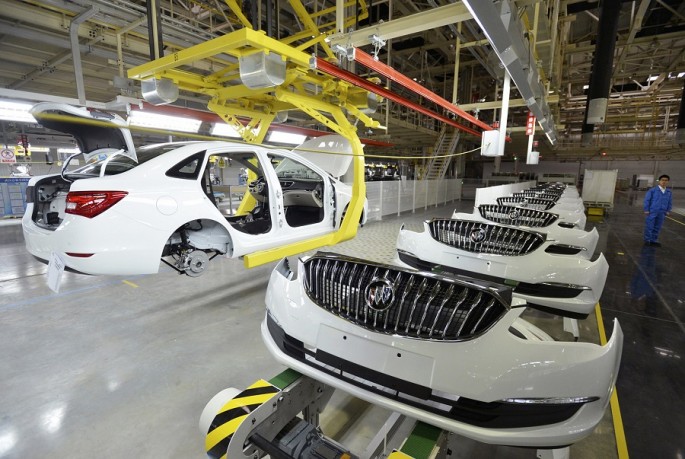In the shadow of China’s weakened economy, the growth of China’s light-vehicle sales also took a hit, dropping to 4.8 percent in the first half of the year compared to 9.9 percent last year.
But with local consumers opting for more expensive models, the market has created an opportunity for foreign automakers to earn huge profits from fewer vehicles sold than before.
Two major international automakers have already taken advantage of the shift: General Motors and Nissan.
In the first six months, GM's China sales saw growth of only 4 percent year on year to 1.72 million units. That's down sharply from the previous year, when GM sales grew by 12 percent.
However, GM China still managed to boost second-quarter earnings by 6 percent to 3.1 billion yuan ($503 million). And they did it by selling more higher-priced vehicles, including SUVs and Cadillacs.
Over the past three years, General Motors has rolled out three SUVs in China: the Buick Encore and Envision, and the Chevrolet Trax. GM has also expanded Cadillac's China lineup to six models.
With new models in dealer showrooms, combined sales of Buick and Chevy SUVs skyrocketed to 83 percent at 148,081 units in the first six months. Meanwhile, Cadillac sales rose 14 percent to 38,444 units.
Like GM, Nissan has also figured out how to make more money in China's automobile market.
Due to flat sales in June, Nissan deliveries for the first six months went up by a modest 6 percent to 587,000 units. However, Nissan expects strong SUV demand will bolster pretax profits in China by 24 percent for the fiscal year ending in March 2016.
In the first half of this year, sales of the upgraded Nissan X-Trail shot up by 87 percent to 70,253 units. Nissan will also get another boost later this year when the redesigned Murano crossover finally goes on sale.
While it is true that the Chinese economy is slowing down--the country's growth was only 7 percent in the first half, down from 4.4 percent last year--it would be a mistake to lose sight of the big picture. Despite the slowdown and the current weak vehicle sales, Chinese households continue to accumulate growth.
And now they are ditching small sedans and microvans in favor of bigger and pricier SUVs and MPVs. China's increasingly sophisticated consumers have also learned to value vehicle safety and connectivity.
If automakers offer the right products, then they still have a good chance to boost profits despite the sluggish market



























